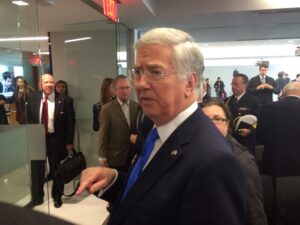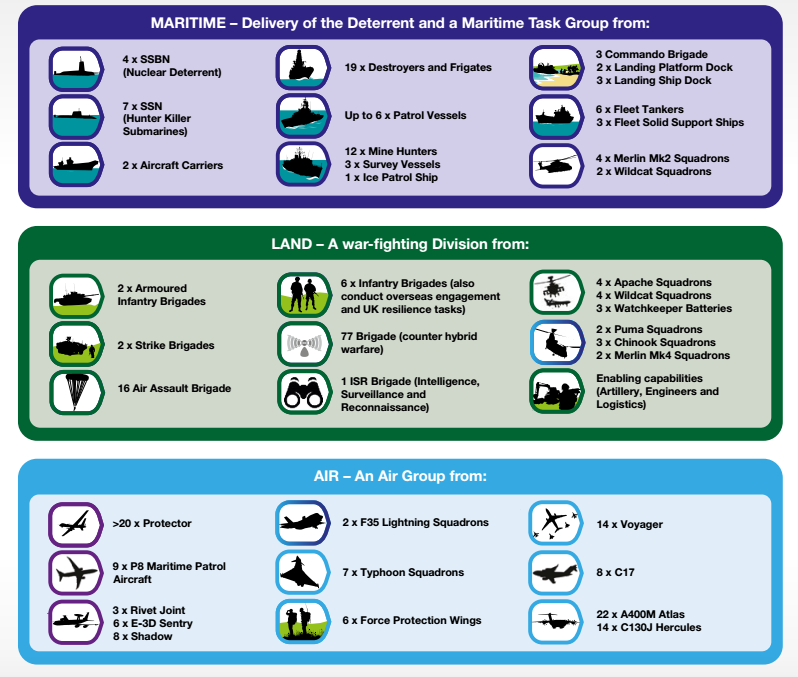UK Needs P-8s ASAP Vs. Russian Subs: MOD Fallon
Posted on

US-built P-8s would replace the retired Nimrod patrol plane, shown here. (Wikimedia Commons)
WASHINGTON: With Russian subs and bombers nosing around the British Isles while the Islamic State massacres Parisians just two hours by train from London, the British Defense Ministry is besieged from both sides. The new Strategic Defense Review aims not only to rebuild the UK military after 2010’s cuts but to make it capable of confronting both nation-state and terrorist threats, said UK Secretary of State for Defense Michael Fallon.
“Clearly, it had a galvanizing effect,” Fallon said of the Paris attacks, inspiring Parliament to reverse a 2013 decision and authorize British airstrikes inside Syria.

Michael Fallon
But the Russians are pretty galvanizing too, Fallon made clear in his remarks this morning to the Atlantic Council. In particular, ever since the UK retired its Nimrod reconnaissance planes, it can’t properly track Russian submarines, whose activity in the Atlantic has only increased. That leaves the Royal Navy nervous about the safety of its sea-based deterrent, a small fleet of Vanguard nuclear-missile submarines (SSBNs).
That’s why the British resolved to buy nine Boeing P-8 Poseidon patrol planes in their recently completed Strategic Defense Review. How fast will they get them?
“[Regarding] accelerating the arrival of the P-8,” Fallon said, “there will be discussions and I hope there will be this afternoon,” when he is meeting with US Secretary of Defense Ash Carter.
(Fallon also said he expected to see more US purchases of British equipment in return).
Fallon also reiterated Britain’s commitment to the SSBN force the P-8s will protect, arguing the nation must spend billions to replace the aging Vanguards with four new nuclear missile submarines. (The new SSBNs will share many components with the US Navy’s costly Ohio Replacement Program subs).
“If we were sure that there would no nuclear threat emerging against our country throughout the 2030s, the 2040s, and 2050s, right up to the 2060s” — the expected service life of the new submarines — “then of course we would have a fresh look at our nuclear deterrent, but we can’t be sure,” Fallon said with beautifully British sarcasm.
The Royal Navy is investing heavily in high-end conventional forces as well, from two new aircraft carriers embarking F-35B stealth fighters to Type 45 destroyers and Type 26 frigates. By contrast, the historically less-favored British Army — which lost the “Royal” designation when it helped Parliament cut of King Charles’s head — has been cut steeply enough to inspire major anxiety among retired generals.

The UK’s planned 50,00-strong expeditionary force. (SOURCE: UK MoD)
That said, Britain will retain the capability to deploy a heavy combat division, built around two heavy armored brigades and supporting forces such as attack helicopters. That’s something few countries can boast, Fallon argued. In addition, the review creates 5,000-strong “strike brigades” for rapid deployment operations. The British will also beef up their special operations units to take on larger missions at longer distances. A Royal Air Force “expeditionary air wing” with its own F-35Bs and the new Royal Navy ships will accompany the ground troops in a tri-service expeditionary force of 50,000.
Unlike the nuclear-missile subs, such an expeditionary force could swing between high- and low-end threats. It could intervene in a Third World crisis (although Fallon ruled out Western ground troops in Iraq) or rapidly reinforce Eastern Europe against a Russian threat.
“So far as the balance between the state threats and non-state threats, yes, that’s what this review was all about, and we’ve concluded we have to deal with both,” Fallon said. “We need forces that are agile enough and flexible enough to be able to cope with both types of threat, which is why we are reconfiguring our army.”
Subscribe to our newsletter
Promotions, new products and sales. Directly to your inbox.
